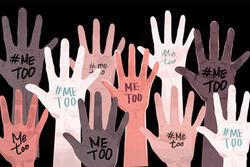"Jennifer's Body": A Metacommentary on Exploitation in the Film Industry
At first glance, the film Jennifer’s Body seems like just another box office horror film, with the intent of thrilling and scaring its viewers (and titillating its audience with sexualized images of Megan Fox). However, the screenwriters and directors of Jennifer's Body created a film that simultaneously provides viewers with entertainment and makes them ponder the film industry and its treatment of women.
Jennifer's Body premiered in 2009, during the early days of #MeToo, when the movement was not as mainstream as it is today. Thus, the conversation around rape and assault was very different from what it is now. The film Jennifer's Body addresses themes of assault and exploitation without being obvious about it—which may have been a necessary tactic for screenwriter Diablo Cody, who was a woman working in the film industry of that era.
Jennifer's Body is a story of a young girl, Needy (played by Amanda Seyfried), and her best friend, Jennifer (played by Megan Fox). In the beginning of the film, the two go to a local bar in town so that they can watch an up-and-coming boy band called “Low Shoulder.” The bar catches fire under mysterious circumstances, and the boy band offers to take Jennifer home in their battered-up van. Needy, shocked, and at a loss for words, watches helplessly as her friend slowly climbs into the vehicle. The members of Low Shoulder take Jennifer to a nearby forest, tie her up, place candles around her and perform a sacrificial ritual to Satan. The rules of the ritual clearly state that they must murder a virgin in order to become famous; however, since Jennifer isn’t a virgin when the boys kill her, she turns into a vampire demon who murders and eats boys.
This storyline depicts very relevant power dynamics, as Jennifer is lured to her death by boys she believes will use their fame and influence to help her when, in reality, they themselves are dangerous people who ultimately assault her.
Sound familiar? Lupita Nyong’o, Janice Dickenson, Joan Tarshis, and Lucia Evens are just a few of those who lived through such an experience. All intelligent and strong women, they experienced abuse and harassment by men in higher positions of power and influence. Lupita Nyong’o, for instance, was one of the few African American women who felt comfortable to share her story of the harassment she suffered at the hands of Harvey Weinstein. Stories like hers are a dime a dozen in Hollywood; but for fear of losing jobs and connections, as well as retaliation, they have been “hush hush” for years.
Jennifer’s Body portrayed these power dynamics out in the open. Sure, being murdered in the woods and turned into a demon isn’t the most realistic of plot lines, but I’m confident that the 2009 film industry wouldn’t have responded well to a more realistic description of events. To create a movie, a screenwriter must have a label and production team willing to make their vision come to life; by depicting an instance like this in a fictional world, I think it enabled Cody to add these feminist undertones in a way that would be accepted by the production team.
In the same vein, I imagine Cody had to make allowances for the male dominated label to create a marketing strategy that is utterly unfeminist in order to produce her movie with feminist undertones. In a design that I imagine was meant to bring about as much profit as possible, the marketing team of Jennifer’s Body created sexualized posters for the film. Megan Fox is seen in a small schoolgirl uniform, red heels, shiny perfect skin, and scarlet blood dripping off her lips. The epitome of a sick schoolgirl fantasy. This strategy’s main goal, I believe, was to draw straight men into watching the film for the purpose of seeing Megan. This is ironic, given that the film itself discusses the exploitation of the female body. This tactic had nothing to do with the actual content of the film but was an attempt to make as much of a profit out of Megan Fox’s looks as they possibly could—with no regards to what she, the directors, or the screenwriters wanted for the film.
After Jennifer’s murder, Low Shoulder sees a spike in their popularity. They are named “national heroes” for helping people out of the burning bar, they do countless interviews about the tragedy, and they release a single where 3% of the profits go to the victims. Even though Needy doesn’t know the details of what happened to Jennifer, she points out the discrepancies in the media portrayal of Low Shoulder. In the film, Needy confronts her classmates about the newly released single, asking, “What happens to the other 97%?”
The boy band directly profited off the murder of Jennifer, and a main character challenged it head on in dialogue. And yet, an exact instance of exploitation took place in the film's marketing. This demonstrates the influence that the male gaze has in our society.
Jennifer’s Body is a fictional world filled with real life circumstances. The world of Jennifer’s Body is a world in which the female director and screenwriter get to choose what is presented to the public. A world in which violence against a woman results in that character gaining more power. A world where justice is finally served, where the assaulted woman hunts down and destroys the assailants. Jennifer's Body is a vessel through which we can see connections to real life circumstances play out and ultimately see justice served. This plot, mixed with the irony of what happened with the film's marketing, shows us the exact issues of the film industry and, I believe, asks us to do something about it.
This piece was written as part of JWA’s Rising Voices Fellowship.








Boy, this is a stretch.
And Jennifer, the victim of the assault, does nothing to hunt down her assailants in the film. She doesn't care at all about the incident after, only her friend, played by Amanda Seyfried does.
There are some definite analogies in this film, but this one ain't it.